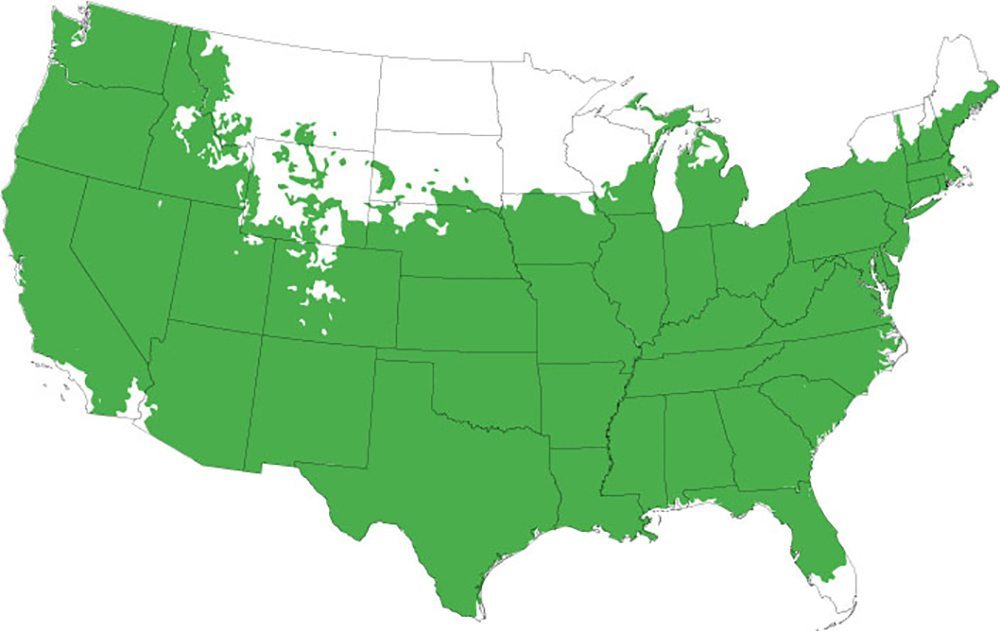Shinseiki Asian Pear Tree Yields Sweet, Crunchy Pears With Low Chill Hours
Grow Crisp, Juicy Fruit with the Low-Maintenance Shinseiki Asian Pear Tree
The Shinseiki Asian Pear Tree produces bright yellow, apple-crisp pears with a sweet, juicy flavor. Low chill requirements, fast fruiting, and high yields make this self-pollinating tree ideal for home gardeners in USDA zones 5–9.
Shinseiki Asian Pear trees are self-pollinating and feature delicious bright yellow-skinned fruit that begins to ripen in mid-July. This Asian pear variety will benefit from the addition of other Asian pear trees planted nearby to enhance cross-pollinating. Shinko Pear Tree is the best variety for this.
The yellow fruit is crisp, juicy sweet, and slightly tart, making it ideal for salads, pies, and fresh eating. It is commonly called dessert pears for its sweet and juicy taste. Harvest these medium-sized pears in the late summer months – usually sometime in August. Once ripe, the pears can bruise easily.
Why You'll Love the Shinseiki Asian Pear Tree
Shinseiki is resistant to pests and diseases (even to the destructive codling moth). It is somewhat resistant to fire blight but can be susceptible to fire blight if placed in the wrong location. One of the earliest Asian pears to be brought over to the United States about 200 years ago.
The trees produce pears as early as 1-2 years after planting. Once established, the fruit tree can produce 500-700 pears. The semi-dwarf pear tree grows up to 12-15 feet tall and wide when a mature tree. This makes it perfect for home gardeners with limited space.
The Shinseiki Pear tree is ideal for warmer climates due to its low chill hour requirement of 300-400 hours for fruit production. This Pyrus pyrifolia cultivar is low maintenance and easy to grow and will begin heavily bearing fruit after its second year of planting.
Shinseiki Pear Tree Landscape & Fruit Ideas
The Shinseiki Asian Pear Tree is a standout choice for home gardeners who want both beauty and abundant harvests. With fast fruiting, high yields, and attractive summer foliage, this semi-dwarf pear tree adds both visual appeal and practical value to any garden space.
- Great for backyard food gardens, adding reliable summer harvests without requiring multiple trees.
- Perfect for edible hedges or property borders, offering structure plus productive fruiting each year.
- Works well as a feature tree in small landscapes, providing seasonal interest without taking up too much space.
- Excellent choice for cooks and home preservers, supplying fruit ideal for canning, desserts, and fresh snacking.
- Enhances mixed orchard plantings, helping improve pollination and overall fruit production when paired with other Asian pears.
Shinseiki Asian Pear Tree Care
Shinseiki is resistant to pests and diseases (even to the destructive codling moth). It is somewhat resistant to fire blight but can be susceptible to fire blight if placed in the wrong location. This Asian pear fruit tree prefers exposure to full sun and well-draining soils. This Asian pear Pyrus variety can benefit from the addition of slow-release fertilizer once a year during the growing season to the top of the root ball near the base of the tree.
Pruning Guide
Prune your pear trees in late winter or early spring before green fruit production begins. You want to prune for air circulation, prune off dead and diseased branches. In late spring or early summer, you may have to prune heavy-bearing branches. Since these trees produce bushels of apple pears, the fruit will begin to bear too much weight on one branch. Prune annually and perfect fruit thinning for the best crop production.
Why Buy Pear Trees Online from Perfect Plants?
For over 45 years, Perfect Plants has been a small family owned farm in north Florida. We grow our plants right here on the property before boxing them up with the utmost care to be shipped out to your front door. We aim to deliver to gardeners like you exactly what our brand name suggests; the perfect plant!
Shop the Shinseiki Asian Pear tree for sale.
Shop all our pear trees for sale as well as our complete collection of fruit and nut trees.
At Perfect Plants Nursery, we stand behind every tree, shrub, and flower we grow. Every order is protected by our complimentary 30-day plant guarantee, ensuring your plants arrive healthy and ready to thrive. Unlike many online nurseries, Perfect Plants ships directly from our family-run farm, so you’re backed by growers who care about your success long after your plants leave our nursery beds. Grow with confidence knowing your investment is protected from the start.

Sunlight
Full Sun / Partial Shade
Foliage Color
Green
Flower Color
White
Mature Width
12-15 ft
Mature Height
12-15 ft
Growing Zones 5, 6, 7, 8, 9

FAQs for Shinseiki Asian Pear Tree





































